
If you haven’t been living under a rock (or been on this platform at all), you may (read: will) be aware of the following events:
Elon Musk bought Twitter for $44bn.
He then renamed it X, a throwback to the X.com domain he has owned since the 90’s and the precursor to PayPal
Now that that’s covered, some thoughts on why he did this, where it’s headed and how every user might get involved.
Why Twitter?
The party line in the lead-up to and ever since the Twitter takeover has been that Twitter is the world’s “digital town square”. Prior to acquisition, some stated concerns that the purchasing party had with the platform were its restrictions on free speech. In an ideal world, the town square is a place for open communication, serendipitous interaction and open commerce.
Under the prior regime, Twitter displayed restricted characteristics of the first two features of the town square. My bet in writing this is that the vision for X will try and comprehensively and unapologetically service all 3.
Twitter has a number of characteristics that make it uniquely ripe for a platform mission of this scale. It is a unique source of real-time news – no other platforms (with possibly the exception of TikTok) are as uniquely geared to delivering a stream of takes as soon as action happens in the real world. As far as social platforms go, it is a unique source of understanding people’s unconscious thoughts – there is less filter (and substantially more shitposting) on Twitter than other platforms.
These two characteristics bear a lot of similarities to WeChat, a platform for which Musk has expressed admiration in the past. Similar to Twitter, WeChat’s origins were in an unfiltered* feed of people’s messages benefitting from ‘gotta-have-this’ network effects.
Through this stream of low-effort, low-barrier user generated content, WeChat was able to easily become a place for the breaking of news in real time. These elements created an extremely valuable network of data.
The logical next step from here was to introduce the launch of ‘mini-apps’ – platform-native applications built by third-party developers to utilise WeChat’s network to offering augmented possibilities within the platform to compete with, well, every other tech company.
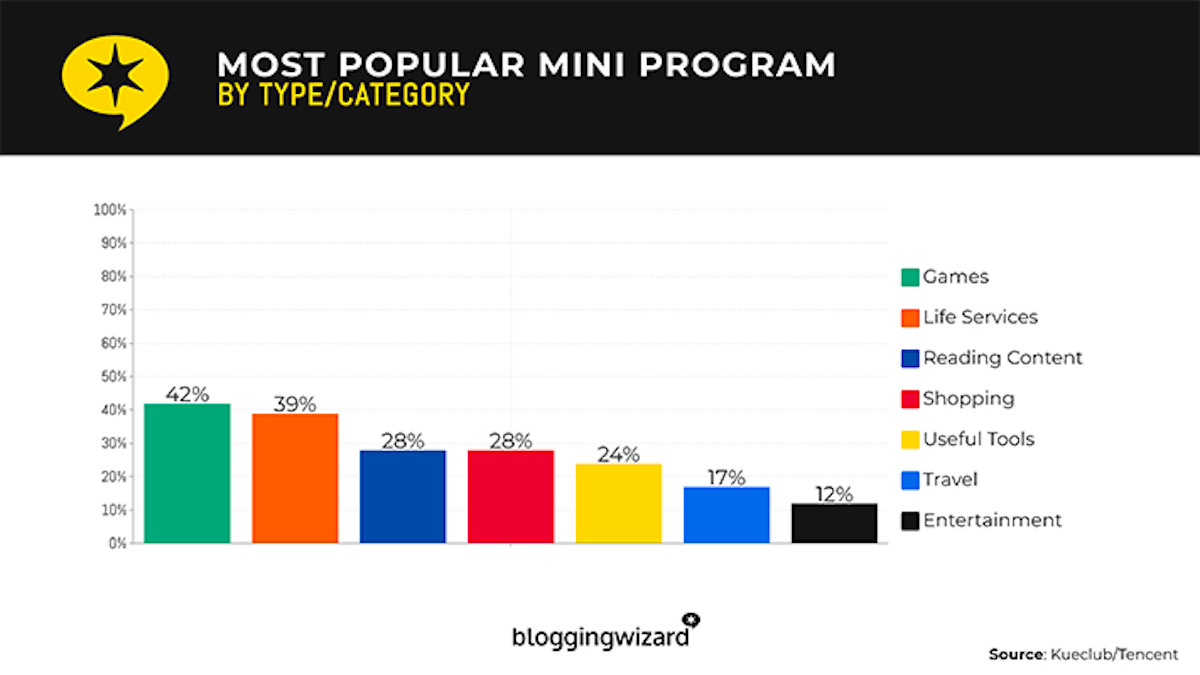
X could be a vision of WeChat built for a more independent, more global audience. As such, while the platform structure may remain similar, the apps may look very different. This, in my opinion, is what so many fail to understand about western ‘replications’ of these super-apps being ill-fated.
What’s been done so far?
Since Elon’s takeover, a few defining changes have been made to the platform that may be indicative of longer-term strategic moves.
- Creator Subscriptions. Creators can charge whatever fee they want for their ‘true fans’ to access exclusive content.
- Community Notes. A decentralised form of moderation that allows users to provide additional context to potentially misleading Xeets. This
- Extended Content Limits. Twitter extended the long-form tweet limit to 10,000 characters. It also expanded its video capabilities, as best exemplified by Tucker Carlson’s relocation of his content to the platform.
- Ad-sharing agreements. Payouts to creators based on their contribution to platform ad revenue, denominated as a % of ad revenue derived from ads placed in the replies to their Xeets.

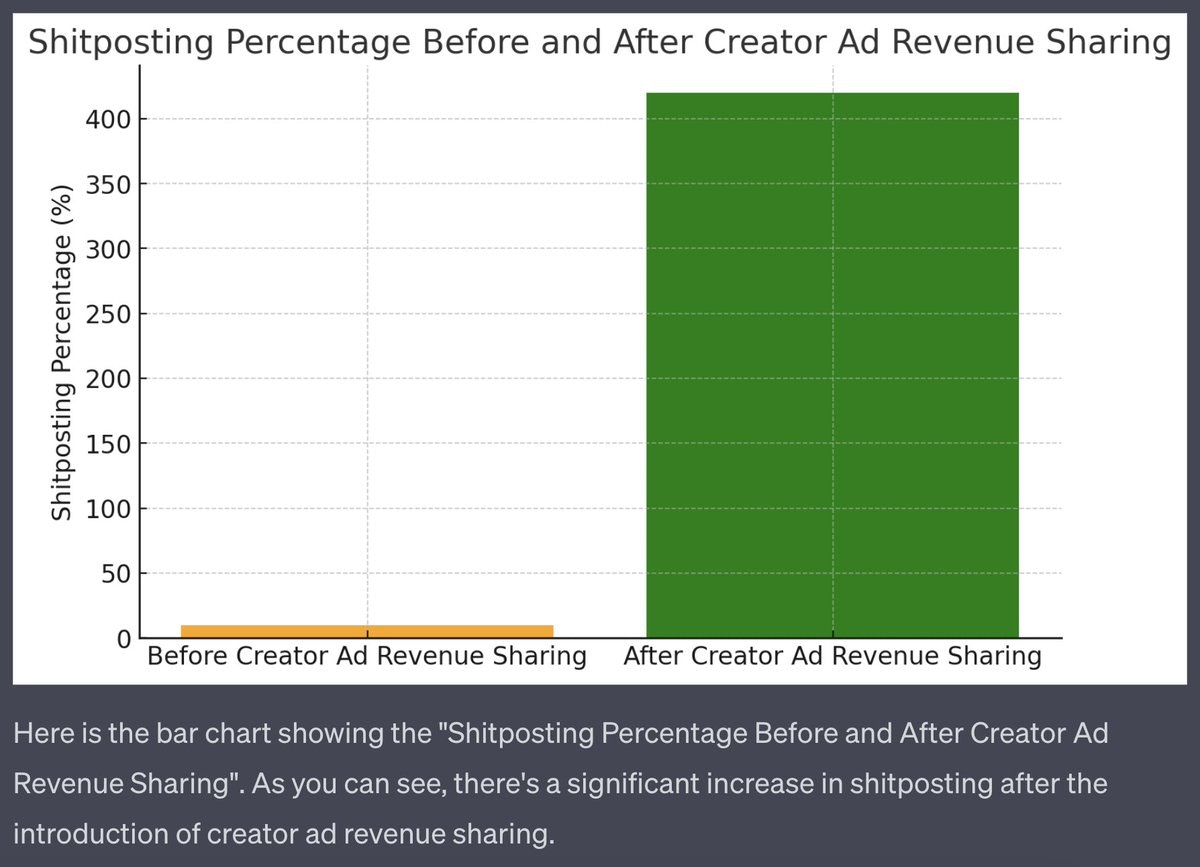
- API Restrictions & Rate Limits. This is the big one. Reducing the prominence of scams and bots is the obvious first-order effect. However, it also could serve a broader economic purpose. The first generation of consumer-ready LLMs benefitted from having free reign over the internet to train their models over whatever data they wanted. This has become the subject of major copyright cases. X’s API restrictions force those looking to scrape the platform for data to pay for the contributions X’s rich dataset makes to their LLMs (or similar), creating a fairer economic model for all involved. The logical next (creator-friendly) step would be, as they have done with ad sharing, to payout network participants for what percentage of their data is being paid for as part of these API charges.
What’s next?
I don’t hold out hope for X to become a fully decentralised protocol in the manner of the Dorsey-era Bluesky initiative. However, given Elon’s ambition starting this foray into social, I do expect it to become platformised. This (fairly aggressive) assumption is based off of two things: 1) Elon’s long-stated ambition to build a super-app of some variety, and 2) the re-application of the X.com domain to open up pursuit of old goals.
‘X-as-a-Platform’ in this sense isn’t referring to you just being able to Xeet whatever you want, whenever you want on the platform (as has always been the case). Instead, I refer to either of these platform definitions of choice:
- A venue for creating and facilitating interactions between different groups (e.g. buyers and sellers, but not limited to this)
- A stage from which applications can be built.
Based on what we’ve seen and heard so far, a lot of the plumbing will be done by Twitter themselves. Already we have heard of them allude to in-house features that will “allow people to conduct their entire financial world” from within the platform. It has arguably made the greatest leap of any mass-scale social platform in terms of rewarding creators via the ad revenue sharing system introduced this month.
As talented as the remaining engineers at Twitter may be, the scope for their delivery of novel products & tools is no match for the widespread creativity and productive powers of
As such, I believe that to build the ‘financial world’ of Musk’s imagination, a real platform strategy is in order. Where is the low hanging fruit to be built for this ecosystem?
What might be built for the X economy?
Novel transaction rails for novel interactions
The idea of “conduct(ing) your entire financial world” from within X is a headline grabbing concept. To enable this first and foremost requires rails for processing these financial transactions. Cryptocurrencies (coin-agnostic) offer a perfect manner for doing this in a censorship-resistant, self-custodial and programmable fashion for users on the platform. Payments for creator subscriptions or Reddit-style rewards do not have to be done via some meaningless platform-native token, but rather in the self-custodial currency of choice that users can hold and transact via X. Rather than having to deal with the muddle of SWIFT codes, bank account numbers or even wallet addresses, users will be able to direct transactions simply via account handles.
Feature Markets
Got a request for feature on Twitter? Say, for example, I want to be able to create debate markets within comments sections, whereby comments are sorted by Agree/Disagree sentiment to a statement tweet.
The most liked comments on either side of the argument are presented side-by-side at the top. I want the winner of this debate to be able to extract a reward. Even if it is not a central priority for Twitter to develop internally or rollout across the platform, why shouldn’t the developer be able to deploy these kinds of features in a sandbox environment to a group of opt-in users that are interested in seeing these kinds of i) experimental features or ii) balanced idea markets?
After deploying from a developer suite (which could be a paid service based on its potential economic upside), developers stand to win rewards based on any of i) revenues from any features that they create with some kind of financial element or ii) the portion of total Twitter revenue derived from engagement with these features (including ads).
Feature marketsmakes this idea sound a bit more novel than it really is – the reality is that they are extremely analogical to marketplaces on platforms like WordPress, Shopify or even Google extensions. For whatever reason, such functionality has been limited to date in the world of social. Outside of social, it is the backbone of gargantuan markets: while maybe a bit broader in scope as a platform, Apple’s App Store contributed $86.8bn in platform revenues in 2022.
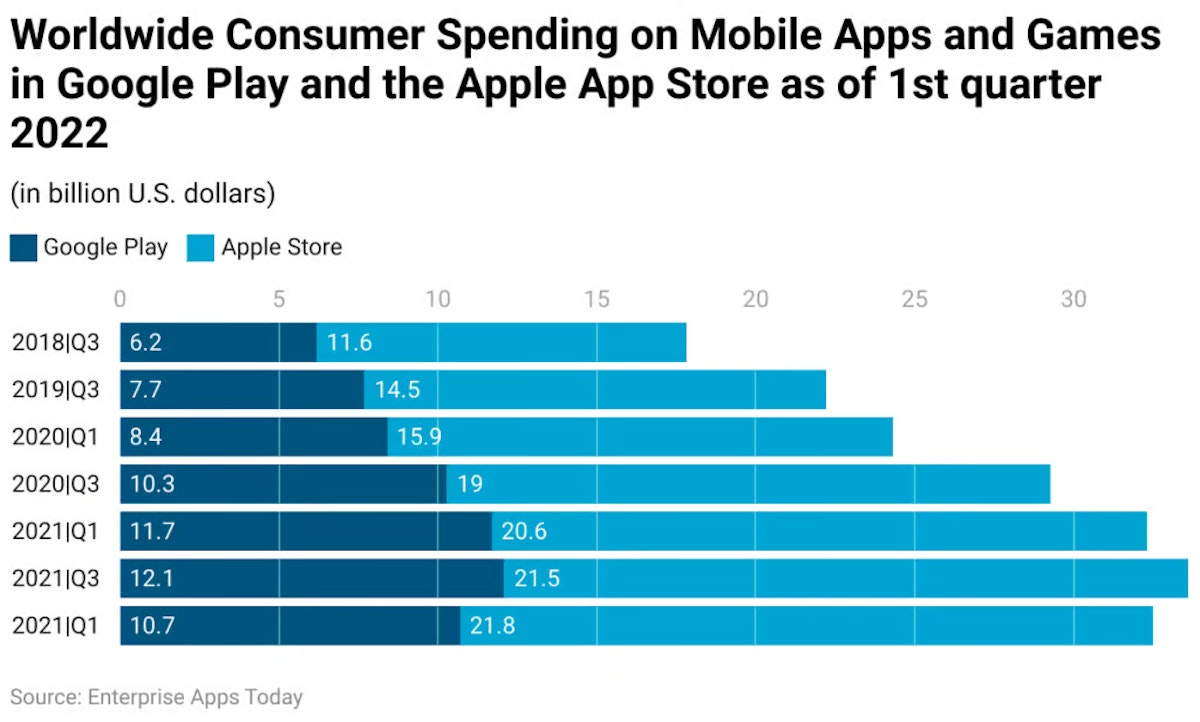
IP & Data Licensing Mechanisms
Beyond the ad revenue sharing scheme that is in place at the moment, there should be other ways for creators to monetise their content (particularly for creators whose content is ripe for being repurposed elsewhere).
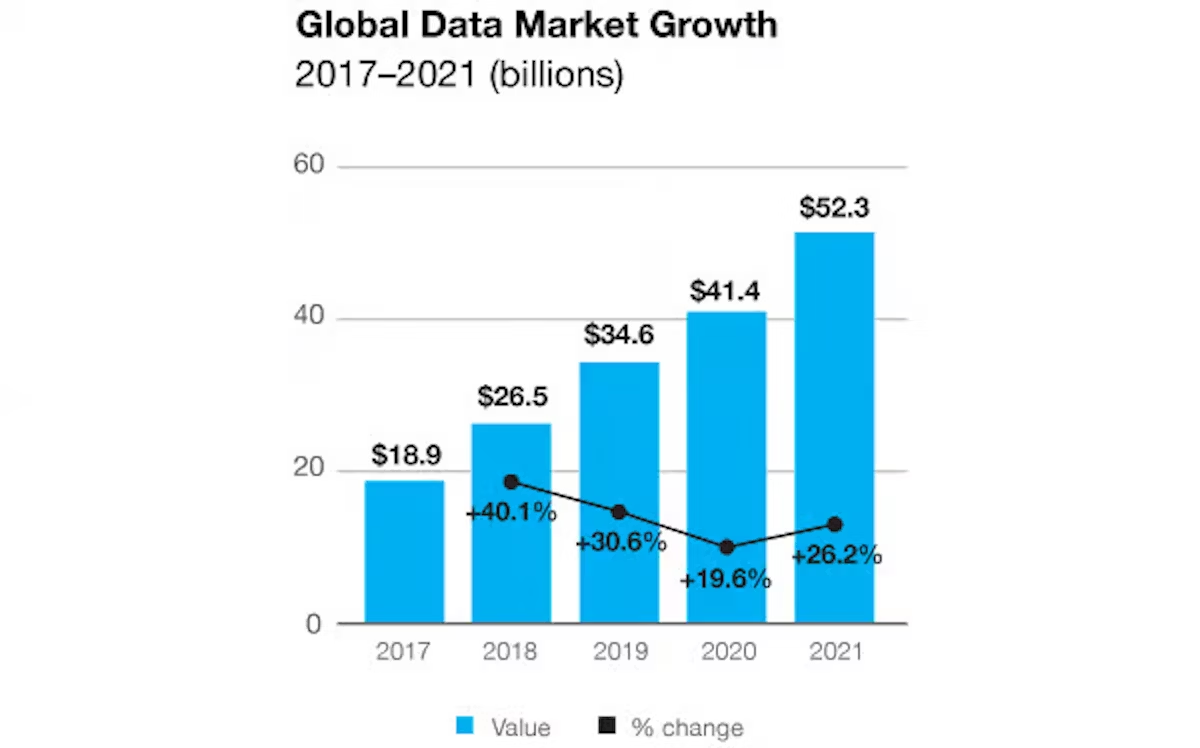
Credit: OnAudience.com
Further, in order for developers to benefit from the potential programmability of X’s data, there need to be responsible, legally viable frameworks in place for use of customer data. Arweave’s Universal Data License (UDL) represents a good proxy of these kinds of systems in that it allows creators to dictate how any given piece of content can be used or remixed whilst earning rewards when it is used for external purposes.
Custom algorithms
For all the work that X’s algorithm puts into keeping you delighted, it is inevitable that everyone gets annoyed with their stream. If I have a day where I want to look at golf content, I don’t want to be tagged as wanting to view that for the rest of my life. If I’m using Twitter for professional purposes but got easily distracted by entertainment news every now and then, I don’t want these 5-minute forays to destroy Twitter as a professional tool for the rest of my career. Sure, features like Lists etc all serve to give the user input into what enters their feed, but this then has the effect of limiting the amazing serendipitous post that pops up in your feed that makes Twitter such a great platform.
Enter custom algos. Developers can play around and deploy different thematic algorithms for users to test. In one example, developers may able to create a proxy of what any given influencer’s feed may look like. I, for one, would be very curious to see what Elon’s doomscrolling experience looks like compared to mine.
At the cross-platform level, this would likely be a read-only function. It is hard to imagine X giving up the reigns to what kinds of content get rewarded or distributed at scale. However, once advanced community tools are built-in, why not allow developers to play with different reward mechanisms for different communities? The average Crypto Twitter user likely gets value out of very different styles of Tweets/replies than, say, someone on Movie Twitter.
Once these communities can be effectively delineated, a lot of design space opens up for novel reward mechanisms.
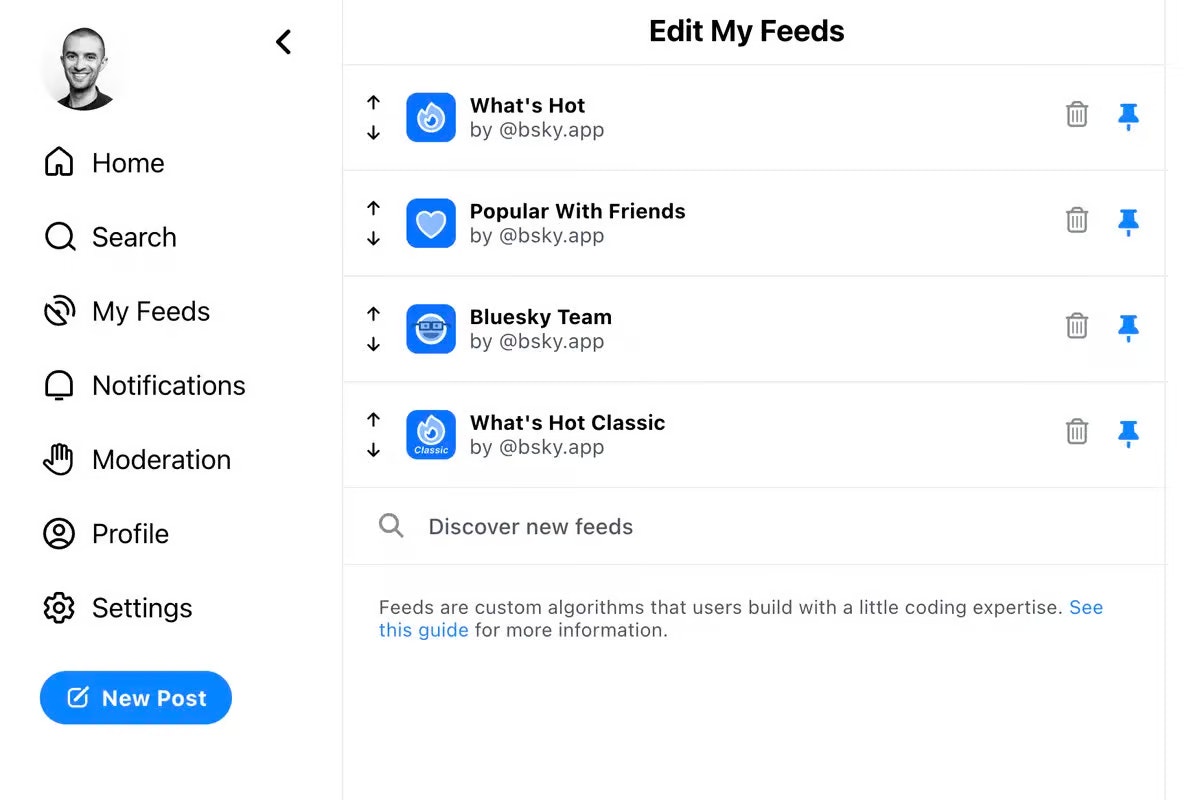
Examples of Custom Algorithms on Bluesky.
To date, Twitter’s own pre-Elon development Bluesky has been the first and only mover in developing these kinds of ‘algorithm marketplaces’. This will be an interesting space to watch. How big this market could be is dependent on your views towards what portion of the $231bn annual social media market is determined by algorithms versus other factors such as marketing or community.
Cogsec Apps
Ever since the events of 2016, misinformation and informational integrity have been core themes in the social space. How can we better protect people against this kind of misinformation? Do people even want to be protected or have balanced opinions?
Creating an open market for cogsec applications that act as a form of ‘cybersecurity’ against misinformation would be a boon to any platform’s claims of being a bastion of free speech. These tools can adopt a variety of different features to de-bias certain pieces of information. Much of this is very speculative, and would require user opt-in to avoid being entirely Orwellian: content filters to repackage tweets with less emotional appeal whilst maintaining integrity of the original message or reputational slashing for accounts that are repetitively tagged as producing misleading content by Community Notes contributors are two examples.

Credit: Mordor Intelligence, 2022
Community Notes is actually a step in the right direction as far as cogsec goes on the platform – the most obvious extension here is to allow (and possibly even encourage) users to moderate i) Community Notes themselves and ii) any measures taken by X as a platform to censor certain content on the platform. Beyond this, the idea of rewards for reputable and reliable user contributions to Community Notes seems a likely extension of this first-phase of platform revenue sharing mechanisms.
Commerce Infrastructure
For most, buying useless shit is a key tenet of the operation of their financial world. As such, ‘arm-the-rebels’ style commerce tools are likely to creep into the X platform (apologies, Shopify).

Credit: Grand View Research, 2022
I believe that, first and foremost, we are not far away from centralised features that allow people to sell directly from their profile or embed checkouts within tweets.
Better Community Tools
Community building on X today is mostly a function of its content algorithm. I like startup content, I fall in with startup people on Twitter. How can this be made more proactive, and how can these small subcultures on the platform create their own mini-apps without having to secede from the platform to places like Discords or Slacks?
To the above, I think it is likely that X will enter the work communications space for remote teams. With this comes the opportunity to rebuild the kind of plugins and additional apps seen on Slack, Discord and their ilk from the ground up.
Prediction markets & other voting mechanisms
In these early days of Elon-era Twitter/X, we have seen many company-level decisions be informed by simple Yes/No polls from his handle. How much further can these kind of trends go across a broader range of potential applications?
Prediction markets have been a polarising topic since the first large scale, skin-in-the-game markets were launched around the time of Ethereum (Augur being the first mover in this case, followed by successors such as Polymarket, Manifold Markets and Kalshi to name a few).
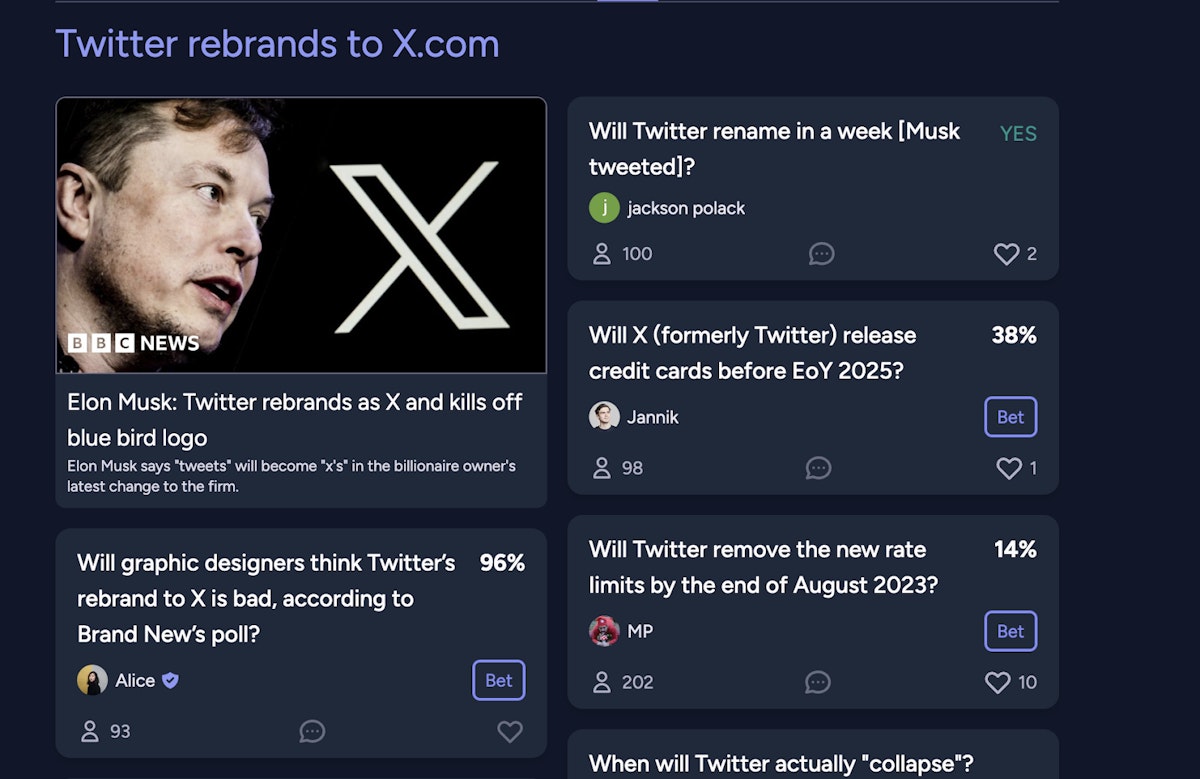
Twitter-specific markets on Manifold Markets
If these products failed to achieve breakout growth, what makes a prediction market on X any different?
The first factor is distribution. The aforementioned existing prediction market platforms are used by small, esoteric audiences seeking gains from supposed informational advantages. X.com has an inbuilt audience of ~330mm monthly active users who are on the platform because they have opinions (or want to find new ones). What better way to prove your value in the market of opinions than creating financially staked markets from it?
The second factor is X’s now proven ability to share revenue with its creators. Similar to the ad revenue sharing scheme, prediction markets features on Twitter could work by allowing users to create their own markets based on assertions they make in their Xeets. If users make sufficiently provocative or challenging assertions, one would assume that the prediction markets for these assertions are particularly hot and might allow the original author to take a share of the market for their provoking thoughts.
This creates a financial incentive for creators to publish thought-provoking mini-content on the platform, and allows ‘reply guys’ to also get in on the action by providing opposing/supporting evidence to influence their side of the prediction market. In this model, these prediction markets can be organised more organically and allow for second-order pieces of information supporting or opposing the cause to play an influential role in market outcomes.
Novel platform analytics
One of the things that web3 has done best (and has been best for crypto twitter) is the depth of analytics openly available to anyone in the space. Data from block explorers can be repackaged and contorted into easily readable formats for anyone interested to easier digest exactly what is happening on chain.
Nothing like this has achieved success at scale for social. Sure, anyone with the requisite level of skill can develop their own sentiment analysis programs or data visualisation techniques based on what is happening, but platforms don’t make it easy for the everyday user to play around with and explore different elements of platform activity.
Why not introduce Dune-style analytics platforms for granular data on social platform activity? At the topline, there would be full transparency around platform activity – for example, how likes/RTs/replies are distributed among power users of the platform or how bot activity is trending over time. Where it gets very interesting is if these platforms can then open-source sentiment analysis tools. In this world, we could see analysts developing publicly available dashboards displaying changes in tone from different account categories over time, common triggers of trends and much much more.

This article was originally published by Archie Whitford on Hackernoon.




